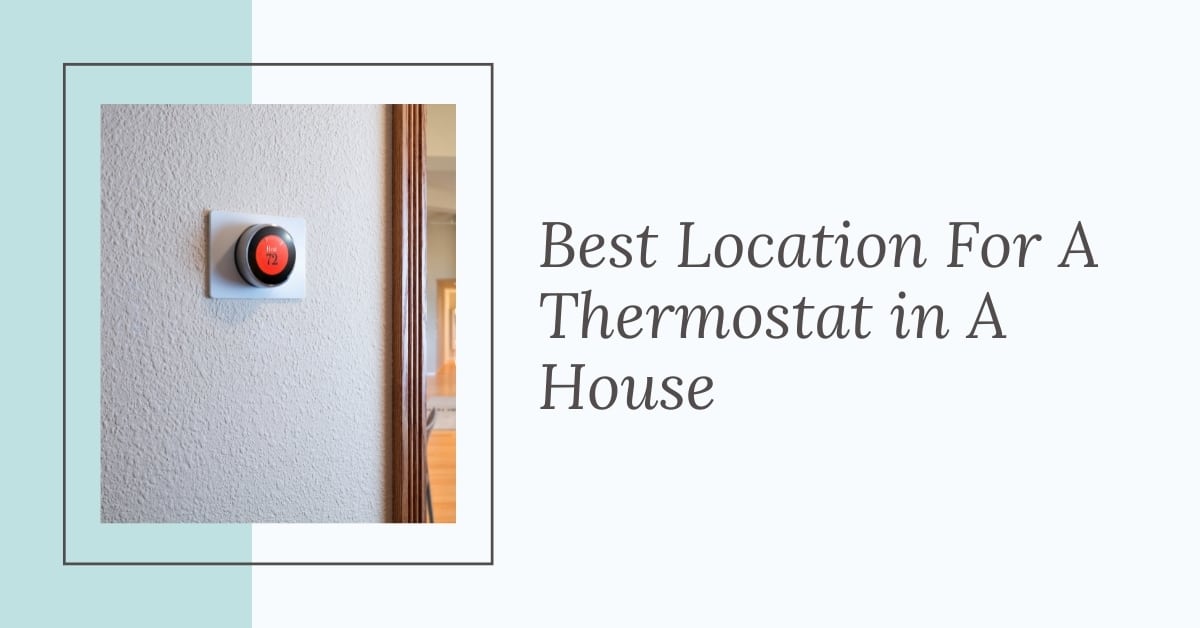Your thermostat is key in helping your HVAC system maintain the ideal temperature. Incorrect placement of your thermostat results in inaccurate temperature readings, making your HVAC system run either too often or not enough. Now that you know how important this device is, let’s talk about the best location for a thermostat in a house.
There’s so much in the HVAC industry that is counterintuitive if you haven’t spent any time working with this kind of machinery, and the thermostat is no different.
People assume (and you cannot really blame them) that if you set an air conditioner lower, the machine will work harder and faster, but the truth is that it will just run longer to reach the desired temperature. Not what you would assume, but reasonable and understandable after an explanation. The thermostat location is no different.
Thermostat Location To Avoid
It’s just a control box like your TV remote. Who cares where I put it?
Actually, it is extremely important where you put it, namely because the thermostat is also a thermometer sensing the temperature in the air. If the thermostat is installed in a poor location, you will experience numerous hot and cold spots in your home.
- The thermostat is too close to the heat source.
The proximity to the heat source can distort the readings on the thermostat’s thermometer. As a result, in the wintertime, the house will never quite reach the temperature you want because the thermostat will shut off the furnace before it has properly heated the home. - A thermostat located on Exterior Wall
This is a big problem. If your thermostat is on this location, you will have issues all year round! In the winter, the cold air on the other side of the wall will make the thermostat run longer than you want, creating a home too hot and a higher energy bill. The same will happen in the summer. - The thermostat is located in an Area with Drafts.
In this scenario, the thermostat will need to compensate for the drafts in only one area. Every other room will be too hot/cold while this room struggles to maintain the set temperature.
Thermostat Placement Guidelines
If you suspect your thermostat was positioned incorrectly, follow this guide to find the best location for a thermostat in a house.
For maximum comfort, place your thermostat in a frequently used room so it can read the accurate temperatures. You should also install your thermostat on a wall unobstructed by household items. It should be positioned at the height of about 52-60 inches.
Factors that Can Effect Thermostat Function
Does the thermostat turn the HVAC system on and off before the house is sufficiently comfortable? Do you find yourself constantly adjusting the temperature to keep the systems running longer? Are your energy bills suspiciously high?
If you think you might have any one of these problems, the placement of your thermostat may be the issue. Many homeowners move into a home and never question the best location for a thermostat in a house, but not doing so could cost you your comfort and your hard-earned money.
Sources of Heat or Cold
The heat from lights, electronics, and direct sunlight, along with excess cold from a frequently opened refrigerator, can all affect the temperature sensed by the thermostat.
Thermostat Installation on an Exterior Wall
Exterior walls, especially in older homes, are colder or hotter than interior walls depending on the season. Even with proper insulation, the thermostat could still be exposed to temperatures that aren’t representative of the temperatures throughout the home.
Too Close to Heating and Cooling Vents
The temperature of the air coming directly out of the supply vents for your heating and cooling systems is going to be much warmer or cooler than it will feel in the room. This air needs to disperse and warm or cool the air before the thermostat shuts the systems down. Placing the thermostat too close to one of these vents could cause the system to short cycle, and the room will never get comfortable.
Drafts
Drafts from windows, exterior doors, garages, or any other source should be avoided when installing your thermostat. These drafts can cause temperature differences around your thermostat, causing it to keep the heating and cooling system running for longer than necessary.
Leave Your Thermostat Install to the Pros
Guessing could lead to discomfort if the systems are shutting on and off prematurely. It could also lead to high energy costs because the units are running for longer than you really need them for comfort. Call a professional HVAC technician to get your thermostat installed properly and in the proper place!






